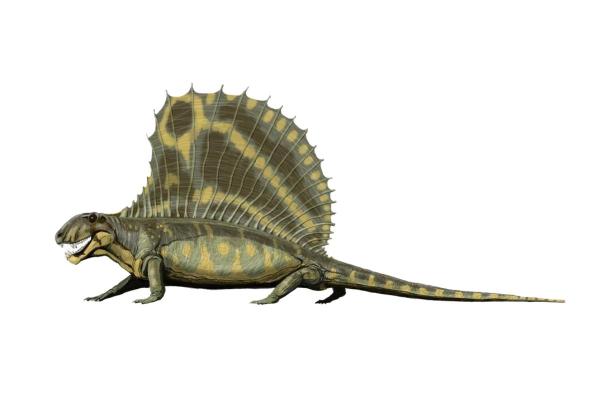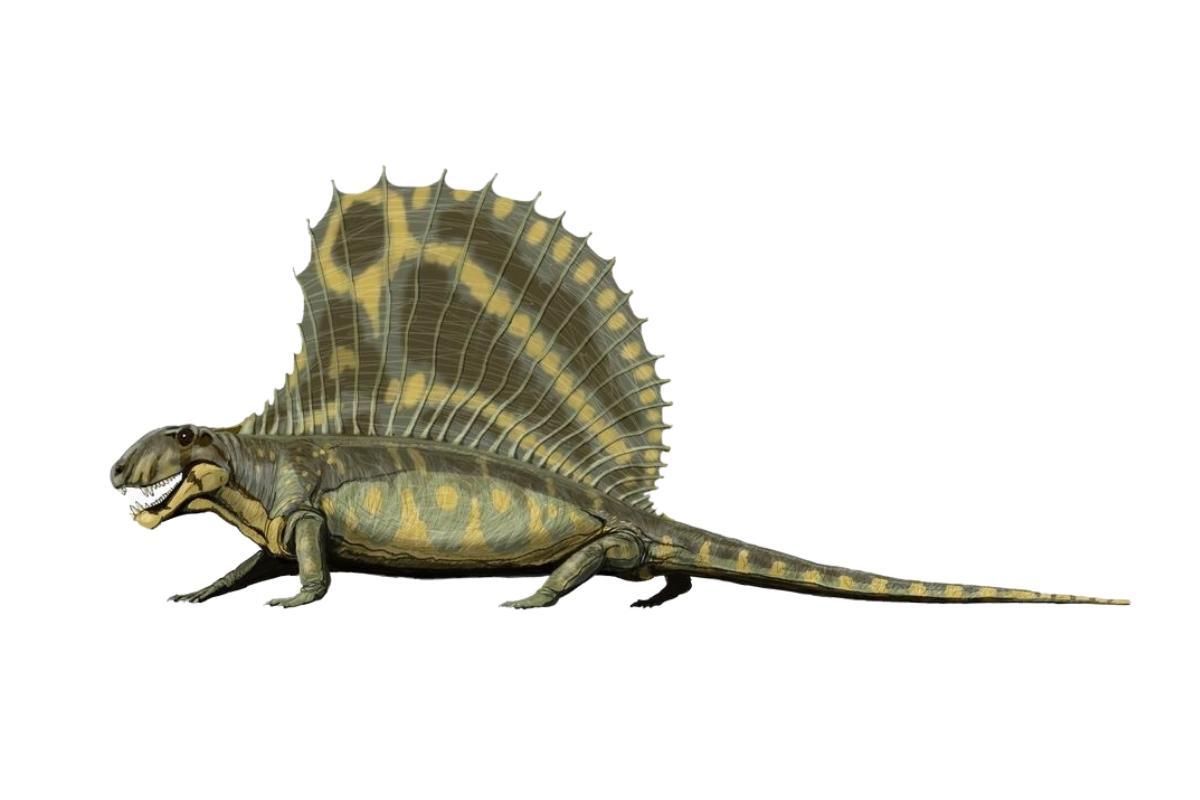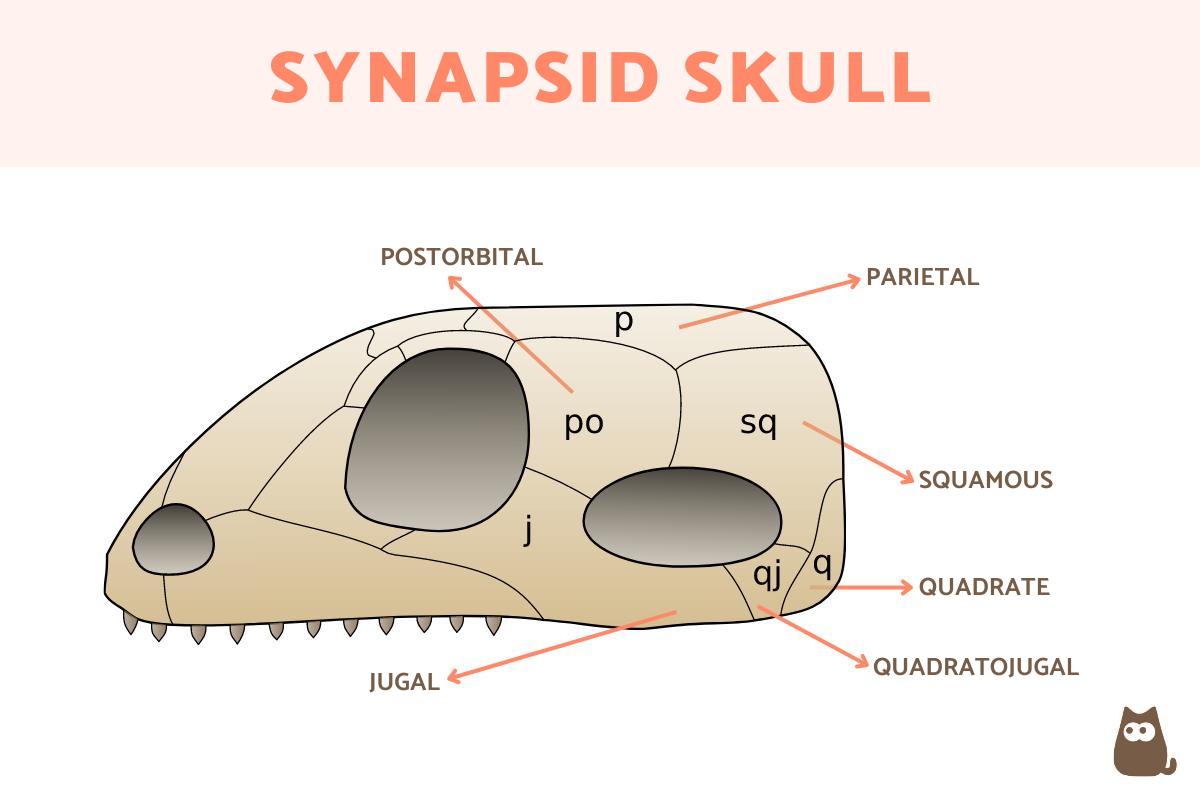What Are Synapsids? - Definition and Characteristics


Amniotes are a clade of animals which include tetrapod vertebrates such as reptiles, mammals and birds. They are distinguished from other animals by the presence of a membrane which covers their embryos during development. These membranes serve various functions, including protection, allowing gas exchange and eliminating waste. Amniotes are also distinguished from other types of vertebrate animal by the presence of thicker skin, which is impermeable to water, as well as a complex respiratory system with expansion and retraction of the rib cage.
The first amniote animals are known as basal amniotes and it is from these animals that synapsids have developed. While this information provides background, it doesn't explain what are synapsids? AnimalWised provides a definition of synapsids, as well as their characteristics and whether
What are synapsids?
Amniotes evolved in several lineages, which were differentiated by specific anatomical aspects. One of the most important distinctions was the morphology of the skull. Synapsids are one such lineage which is defined by their skull.
Synapsids are animals which have a single temporal fenestra. This is an opening located on the roof of the skull, which is usually located behind each eye socket. For this reason, synapsids differ from other amniotes by cranial anatomy, related to these temporal fenestrae openings. The term synapsid is made up of the Greek syn, which means ‘together’, and apsis which translates into English as ‘arch’.
Are synapsids mammals or reptiles?
The first synapsids diverged or evolved about 318 million years ago. It was from this evolutionary line that the first mammals arose. Due to their very similar appearance to reptiles, the group from which the first synapsids evolved was previously referred to as a type of reptile.
For this reason, synapsids were first identified as mammalian reptiles or mammal-like reptiles. These terms are no longer used to refer to these animals because reptiles are known to have had an evolutionary line different to mammals. In this way, they are considered totally different groups and this similar external appearance is not the product of any close relationship or taxonomic similarity.
The first synapsids conquered the terrestrial environment, being for a time the largest known vertebrates. At one point, the term used for synapsids during this period was ‘pelycosaur’. This is no longer common in scientific usage. Despite their once dominant status, these animals were superseded by others due to the natural process of evolution.
The origin of the synapsids belongs to animals which were very similar in appearance to reptiles. However, synapsids are not considered a type of reptile and the only extant synapsid species are types of mammal.
Synapsid characteristics
Now that we have a definition of synapsids and know a little about their origins, we can look more closely at synapsid characteristics. Since these animals have gone through a long period of evolutionary change, many of these features have developed over time. They include:
- Development of an opening in the temporal regionbehind each eye socket. This is where the jaw muscles attach. In the most advanced group, such as mammals, this opening is covered by the sphenoid bone. A kind of arch forms here in the lower part of the cranial area.
- Differentiated teeth which include incisors, canines and molars.
- A lower jaw which has a single bone.
- Mandibular articular bones which have moved toward the ear, forming a chain of ossicles unique to mammals.
- Jaw structures which are separated by the mandibular joints.
- A secondary palate that separates the mouth and nasal cavity.
- Development of a complex tissue that covers the body, generally covered with hairs and in a few cases modified into structures similar to horns.
- Mammary glands have evolved to allow lactation for their young.
- High metabolism and endothermic type.
- The consumption of relatively large amounts of food.
- Limbs developed below the body, rather than to the sides.
- Most are types of viviparous animals, meaning the development of the embryo mainly occurs inside the mother. The only current exceptions are monotremes such as the platypus and echidna which lay eggs.
To learn some more general traits about extant synapsids, we can take a look at our article on fun facts about mammals.

Synapsid evolution
Although much of the evolution of synapsids can be determined to a certain degree of authority, much of it is still unknown to science. The advancement of scientific findings and understanding has meant there are certain evolutionary traits attributed to synapsids which are no longer considered valid. The new data that are collected can sometimes contradict or illuminate what was previously known.
A great mass extinction event occurred around 66 million years ago. During this time, non-avian dinosaurs disappeared and most synapsid species were also depleted. Only mammals and their close ancestors survived this event. Dinosaurs previously dominated the Earth, but their mass extinction meant that synapsids once again diversified and conquered the planet. It is this process which give rise to the largest terrestrial and aquatic mammals that currently exist.
Several types of primitive synapsids existed. As previously explained, they were once known as pelycosaurs. Currently, these groups are considered as ancestors of mammals. The terminology has changed such that they are now known as protomammals, stem mammals or paramammals. All the primitive groups which were known as pelycosaurs became extinct, except for a few which evolved to give rise to therapsids.
Therapsids formed as a type of synapsid which is more evolved than previous protomammal species. They existed as both small and large terrestrial animals, some herbivorous and other carnivorous. Most also became extinct. If the few that survived, we can find the direct ancestors of the animals we currently know as mammals.
In this way, the evolutionary process of the synapsids led to the emergence of thousands of extant species. The only living synapsids are the animals we know as mammals. These include the various types of terrestrial, flying and aquatic mammal species. Since we are also a type of mammal, it is true to say that humans are a type of synapsid.
Discover more about the how mammals and other animals have progressed throughout time with our article on the origin and evolution of animals.
If you want to read similar articles to What Are Synapsids? - Definition and Characteristics, we recommend you visit our Facts about the animal kingdom category.
- Hickman, C., Roberts, L., & Parson A. (2000). Comprehensive principles of zoology. McGraw Hill Inter-American: Spain.
- Laurin, M., & Reisz, R. R. (2011). Synapsida: Mammals and their extinct relatives. The Tree of Life Web Project. Retrieved from: http://tolweb.org/Synapsida/14845
- Naish, D. (2020). Mother Mammals: A Brief Introduction. Retrieved from: https://blogs.scientificamerican.com/tetrapod-zoology/the-stem-mammals-a-brief-primer/






